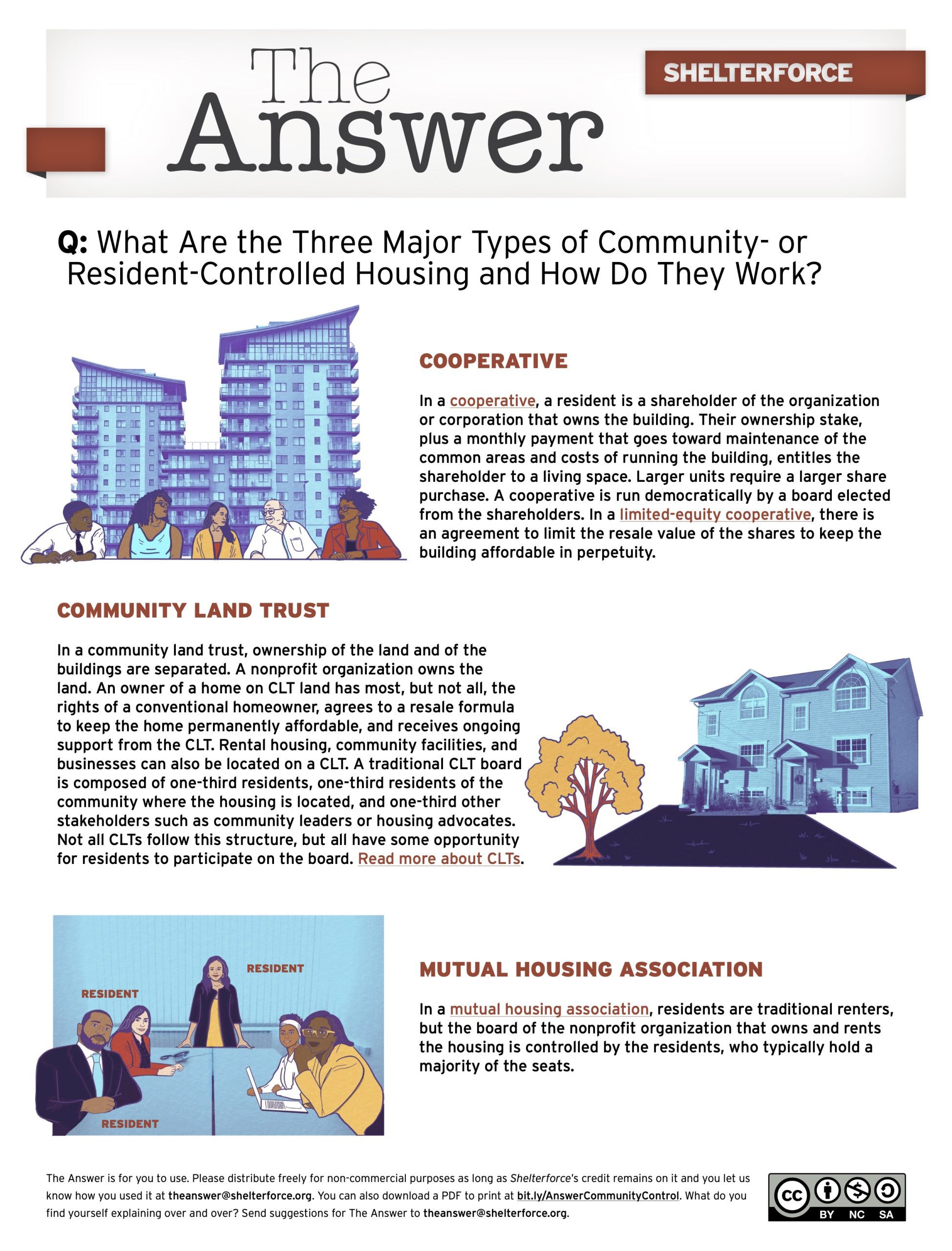Advocates for shared equity homeownership have been talking for years about “going to scale.” Many people have been working diligently to assemble the prerequisites of policy, program, and finance needed to achieve this worthy goal. Another piece of the puzzle is often overlooked, however, despite being comparatively easy to reach. More trumpets. More noise. You can’t go big without getting loud.
We are too modest for our own good. If we are ever to create an environment conducive to the growth of community land trusts, limited equity cooperatives, and houses and condominiums with long-lasting affordability covenants, we must stop sounding so darn apologetic about the models we champion. Instead of meekly saying they are “almost like” the housing with which most people are familiar, “almost as good” as the market-rate, boom-or-bust, go-it-alone homeownership that has dominated public policy and private finance in the United States since the 1930s, we must be braver about saying our models are better.
Better than what? Better than putting precious public dollars into subsidizing affordability that is quickly lost on the first resale. Better than putting precarious people into aging houses they can barely improve or reliably maintain. Better than homeownership that predictably fails for half the families of modest means who are boosted into this favored form of tenure for the very first time.
For many people, in many places, shared equity homeownership is simply a sweeter deal and safer investment than buying a home on the open market. Yet few of us who work with community land trusts (CLTs), limited equity cooperatives (LECs), or inclusionary housing programs mandating long-term affordability are accustomed to trumpeting the superiority of the housing we provide; nor are we comfortable pointing fingers at the spectacle of our kingly competitor strolling naked through the streets, confident that his is the only path to the American Dream.
Such bashfulness does little to advance our cause. We dress our own advantages in the plainest of clothes, while averting our eyes from the shortcomings of market-rate homeownership, allowing it to escape the sort of critical scrutiny that is our daily fare.
One example: proponents of shared equity homeownership are regularly and reasonably asked to defend the ceiling they impose on the resale price of their housing. Doesn’t this mean, ask our critics, that low-income people who resell during an overheated real estate market will be prevented from building wealth? It’s a fair question and one that is easily answered, since there is a body of evidence showing that the owners of shared equity homes typically realize a significant return on their initial investment.
But turn this around. When was the last time you heard anyone ask the bankers, developers, realtors, or public officials who shill for market-rate homeownership to defend their privileged form of tenure? Doesn’t the lack of a floor beneath the equity and security of those who own market-rate homes (or, more accurately, the absence of a watchful steward providing a durable safety net) mean that low-income people are constantly at risk of losing what little wealth they have in housing that is theirs should the economy turn cold–perhaps to the point of losing their homes?
You might think the tsunami of mortgage foreclosures over the past few years would have humbled the proponents of market-rate homeownership. Conversely, you might think that miniscule rates of default and foreclosure among the owners of resale-restricted homes would have emboldened the champions of shared equity homeownership. You’d be wrong, on both counts.
When one has ruled the roost so long, humility comes hard. With so many people praising your fitness and finery–and so many admirers making money from developing, financing, and selling market-rate homes (not to mention wildly speculating on mortgage derivatives)–any criticism of this tenure’s vulnerability is unlikely to lead to a lot of soul searching. Rather than questioning the way that millions of foreclosed homes were owned, it’s simpler to deflect all attention and blame onto the way these homes were financed.
The diffidence of those who promote alternatives to market-rate homeownership is understandable as well. When you’ve been a supplicant so long, begging crumbs from the king’s table, it’s not easy to begin crowing about the stellar performance of your CLT, LEC, or any other form of resale-restricted homeownership. And when the system through which your homes are subsidized, financed, regulated, and taxed is rigged heavily in favor of your main competitor, you are hardly inclined to voice either praise for the former or criticism of the latter.
But silence is not our friend. The best chance we have of ever changing that system is to make more noise. Shared equity homeownership cannot slump shyly in the corner like some poor relative at a family reunion of high rollers. When it outperforms its market-rate cousins, as it often does–preserving affordability and protecting subsidies in hot markets; preventing deferred maintenance, defaults, and foreclosures in cold markets–it must say so, loudly and proudly. Shared equity homeownership will only attract the public and private resources it needs to “go to scale” if it attracts more attention to itself. Instead of begging to be seen as something almost as good as conventional forms of tenure, shared equity homeownership needs to be bragging about the ways it is better. If you’ve got it, flaunt it. This is no time for timidity.





Another example: the unshakeable premise of the public sector’s primary home ownership financing strategy (call the strategy “Plan A”) is to provide subsidy directly to program-eligible households in the form of grants and/or loans so they can purchase unaffordable housing. This strategy is euphemistically referred to as an “affordable housing” strategy even though, by design, it’s an affordable housing payment strategy. It only works if the house in question is unaffordable.
The premise of a shared equity home ownership strategy is to subsidize the cost of developing a supply of homes that can be bought and sold over time among program eligible households (recycled, if you will) at prices they can actually afford (call this strategy “Plan B”). As long as Plan A is Plan A, Plan B is f**ked.
The notable outcomes of Plan A, so far, are a plentiful supply of housing that is unaffordable to program-eligible households (just look around) …and a vast network of affordable housing programs nationwide selling homes at unaffordable prices. (If yours is a shared equity home ownership program, take a close look at your closing docs. Chances are, despite what your brochure says, your sale transactions are recoded in the land records at unaffordable prices and your closing docs stack up a mile high to make it seem otherwise.)
I’m with Davis. We need to get loud. We need to be way less timid about defending Plan B and start singing it’s praises in unison: e.g., “Plan B costs less money, serves more households, it’s time to go to Plan B”, etc.
But the flip side is also true. We need to get offensive (pun intended). It’s Plan A that should be on the defensive, not Plan B: e.g., “Plan A costs more money and serves fewer households for crying out loud …how’s that working out for you?”
If your primary subsidized affordable home ownership strategy costs more money, serves fewer households and doesn’t actually produce any affordable housing (remember, it presumes that housing prices cannot possibly be affordable to program eligible households, so “affordable housing” is not even on the long list of Plan A’s desired outcomes!) …you gotta wonder.
Any discussion of bringing a shared equity home ownership strategy “to scale” (to say nothing of actually trying to do it) can only get twisted as long as Plan A is seen as even remotely credible. It isn’t. It’s time to go to Plan B.